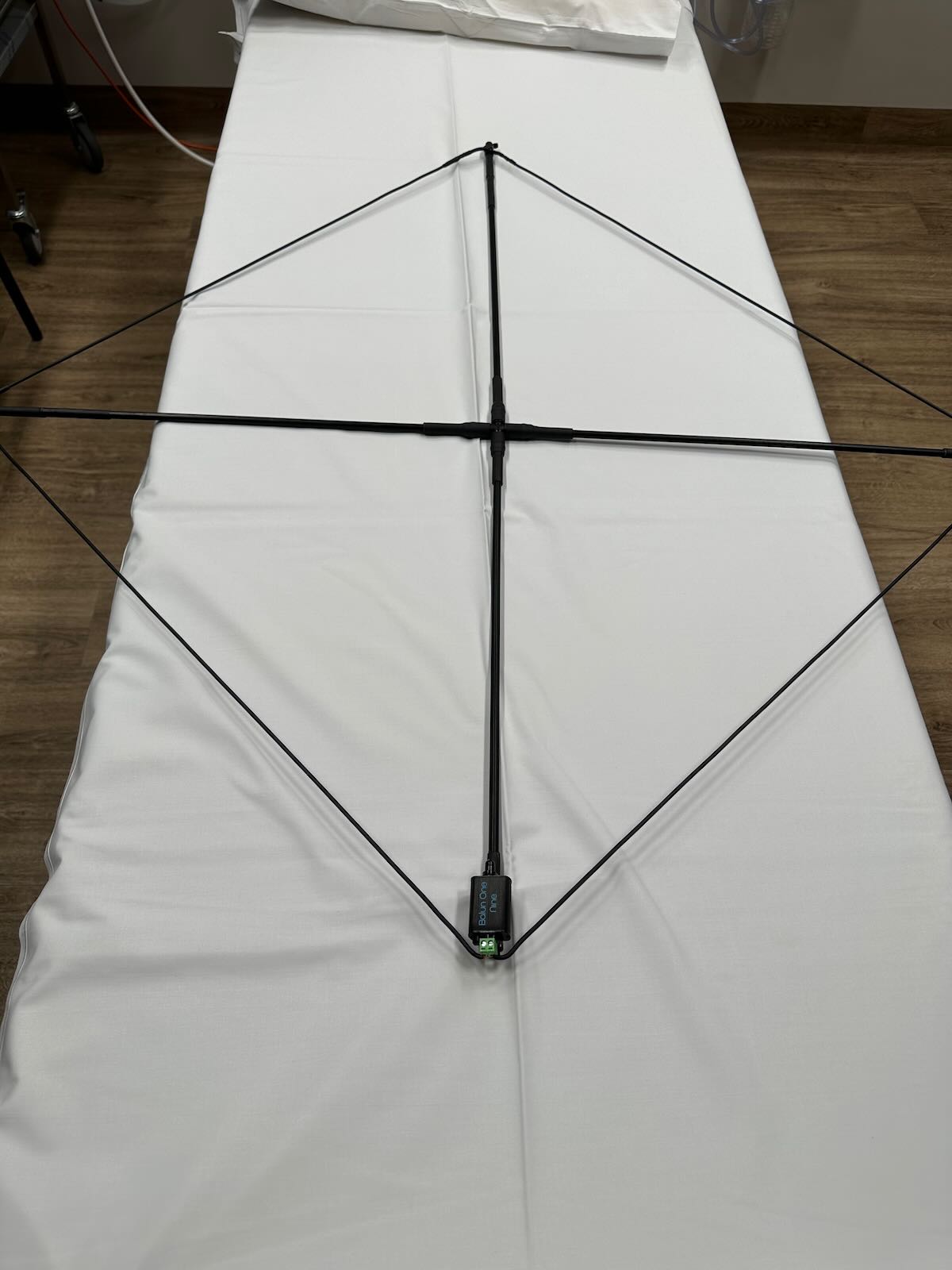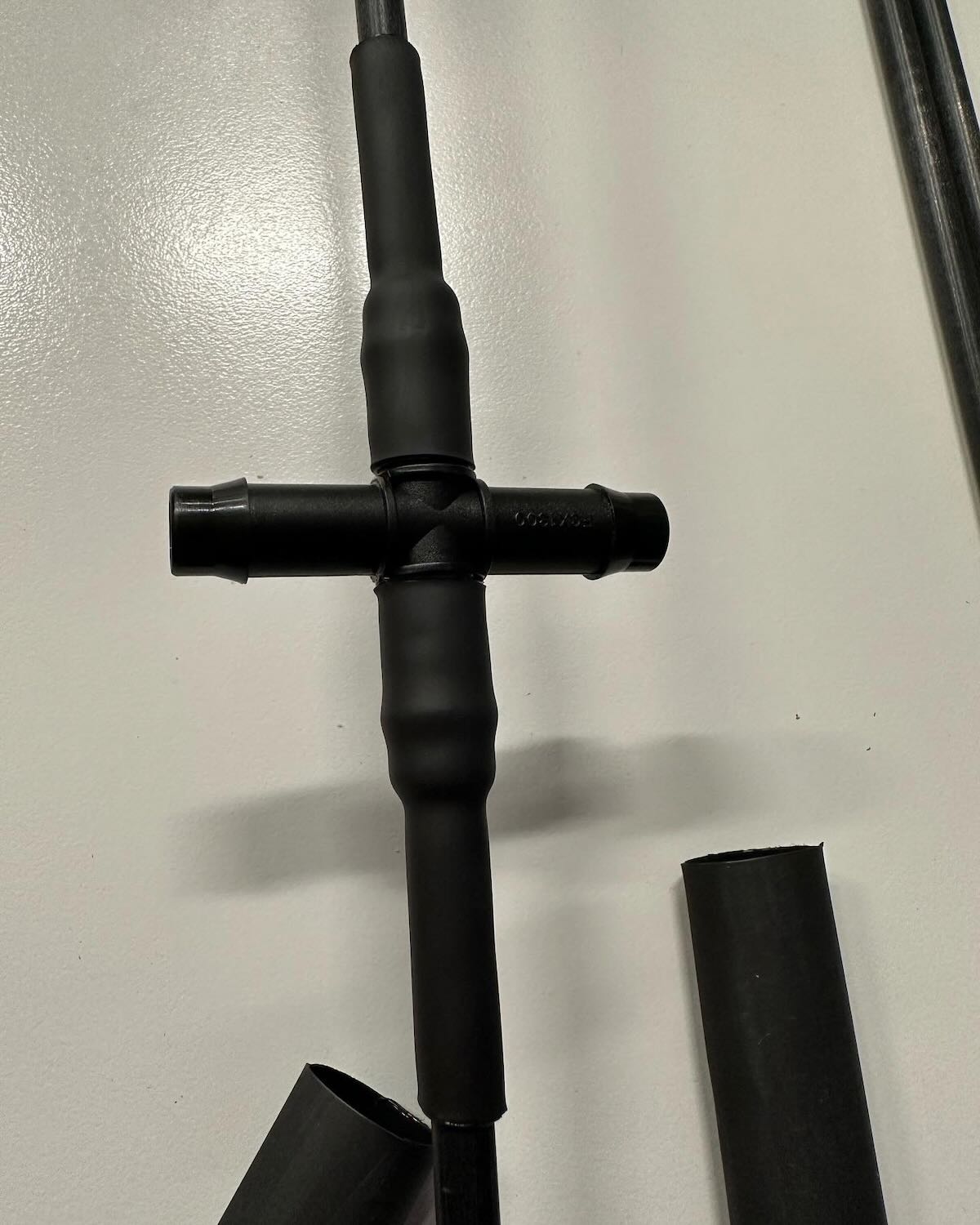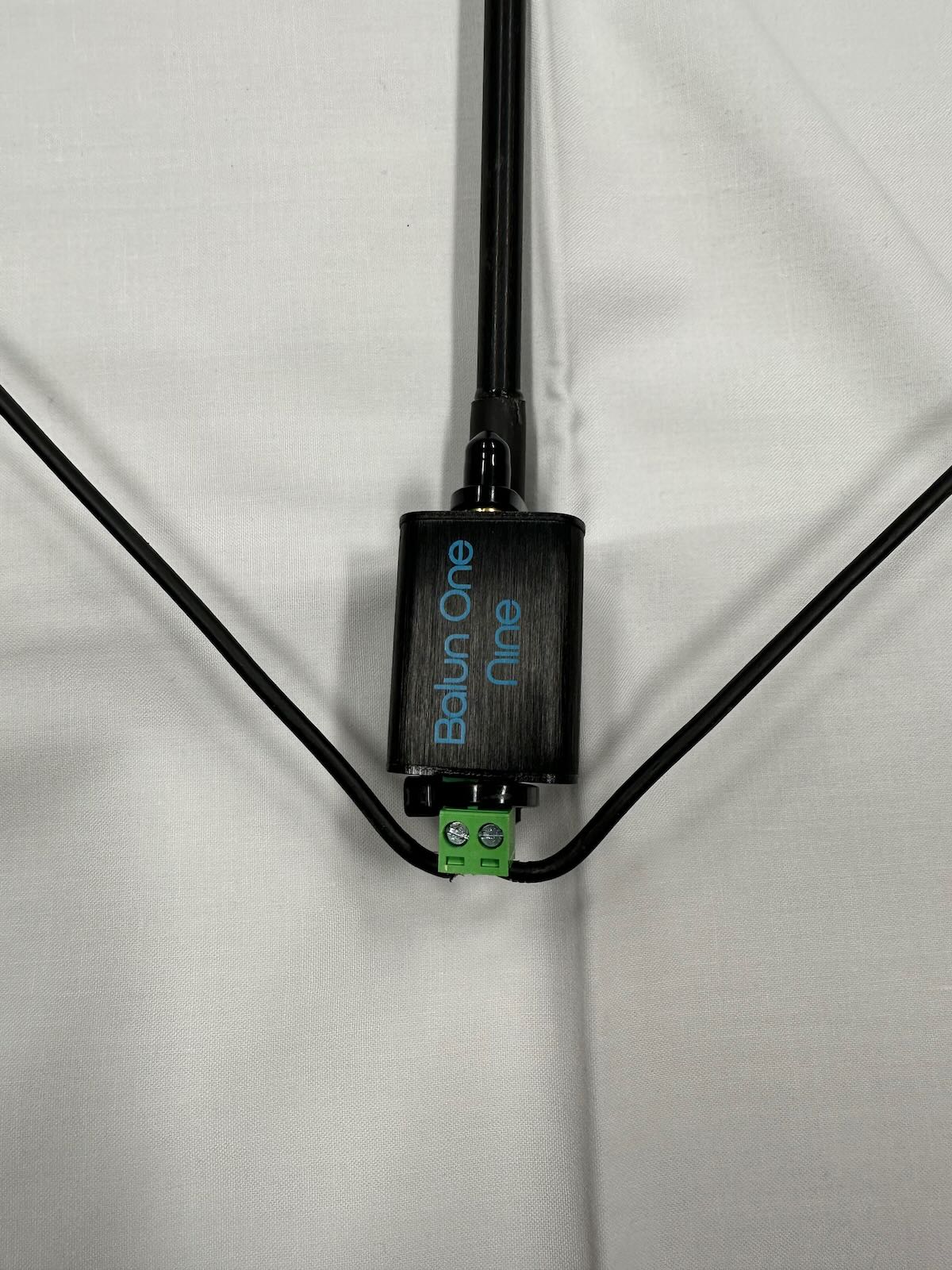 Many thanks to SWLing Post contributor, Andrew (VK2ZRK), who writes:
Many thanks to SWLing Post contributor, Andrew (VK2ZRK), who writes:
Just thought I would share some pics of my SULA build which I constructed in the Emergency department’s antenna building section in between catastrophies here in Australia.
I built it out of 8mm fibreglass tube from a kite supply, 8mm kite nocks, 13mm equal cross irrigation fitting and lots of double wall glue lined heat shrink. The 8mm tube with a short bit of heat shrink is a slip fit into the id of the 13mm equal cross which I secured with more heat shrink.
I then cut the frame to length allowing for the length of the kite nocks. I secured the kite nocks with more heat shrink. I then soldered the resister to 2 lengths of Davis RF 12g antenna wire and fed this through the kite nocks terminating it at the nooelec balun on the opposite side to the resistor.
I think it worked out well. It is very light. I built it to use with my SDRPlay RSPdx.
Thank you to everyone involved in the design process and for providing it to the swling.com community.
Cheers
Andrew VK2ZRK
In all the years I’ve been hosting the SWLing Post, I can safely say that we’ve never featured an antenna constructed in an Emergency Department of a hospital. Thank you, Andrew!
The feedback from the SULA antenna build has been phenomenal. The three-part series detailing the SULA antenna from concept to build was the most popular of 2022 on the SWLing Post.
Thank you for sharing the photos of your antenna. What a professional job, Andrew!
Readers, if you’d like to learn more about the SULA antenna, check out this three-part series–a collaboration between the amazing Grayhat and 13dka.



Hi Andrew, nice build and welcome to the SULA 😀 your idea of using kite parts is really good, it offers both low cost and ease of build
A couple notes, if I can; looking at the images, I noticed that you mounted the 9:1 with the coax connector toward the center of the loop, so I suppose you plan to route the coax toward the center and then down; now, while it can be done, the NEC modeling of the SULA and the field tests from 13dka, shown that by routing the coax that way, the antenna pattern will be degraded, and in particular the backside “null”, so my suggestion is to reconsider the setup and let the coax “dangle” down from the feedpoint as shown in the pics from 13dka and in the building instructions on the SWLing forum
https://swling.net/viewtopic.php?t=55
the above being said, I also suggest you to consider adding a small preamp to the SULA, the latter may be hosted on the supporting mast and powered over coax using Bias-T; not that a preamp is mandatory, but will help a bit, in particular at lower frequencies, where the SULA pays its small size
Oh and before I forget; the SULA is not the same thing as a so-called “magnetic loop”, this means that using it indoors will give results which are below the real SULA performance, in such a case (indoors) other antennas may work better, but if you have a balcony/terrace/yard, then place the SULA outside, on a 3m (10ft) support and it will offer you the expected performance 😀
and then, as for coax routing, please see here, I just added that post to show the effect which routing the coax “inside” has on the antenna pattern
here
https://swling.net/viewtopic.php?p=619#p619
It’s also in the “Feedline” paragraph in Part 2 of the article,, Andrew. 🙂
Does it need a ground rod to work well?
No.
Wow, this is looking really shop-worthy good! (Slaps forehead) — why didn’t I think of lightweight and durable kite supplies, I even have a kite shop around the corner! Luckily I’m too tired to think up 3,000 ER and hospital puns but this sure is an appropriately unusual place to give birth to such an antenna! 🙂
Happy New Year and I hope you are getting good results with the SULA!
One thing to add: Recent experiments with my (passive) YouLoop on the RSPDx showed that this receiver was surprisingly unhappy with very lossy antennas like the YouLoop (compared to the AirSpy or IC-705), so there’s a chance that the marginally higher output of the SULA still isn’t enough to make a preamp unnecessary, at least not <5MHz or so.
Nice job Andrew! I’ll go and read the article now. Particularly as my self Christmas present was an RSP-DX.
Best 73,
Ace
Hi Thomas,
Thank you for sharing this excellent SULA design!
Reading your excellent article, I thought:
“Why didn’t I think of that?”
We enjoy flying large kites and of course fibreglass of carbon fibre kite frame sticks and joining members would make perfect lightweight, durable SULA frames…
Wishing you and all SWLingers a Very Happy and Successful 2023
73
Julian